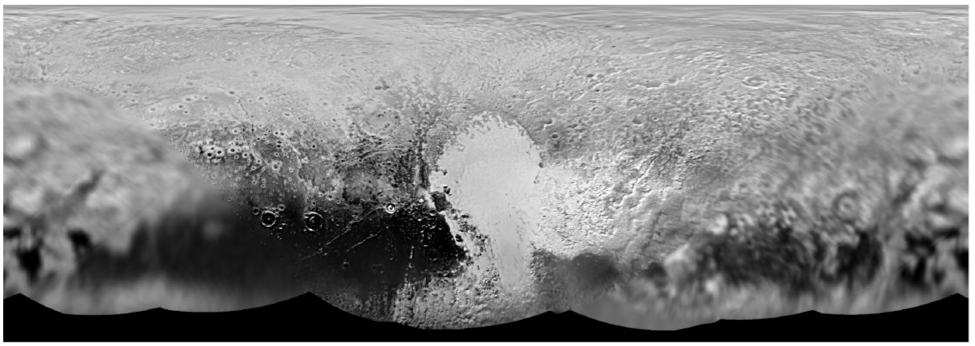The solar system is full of objects (“small bodies”) that include comets, asteroids, and dwarf planets. Many of these small bodies are relics from the early solar system and therefore provide clues about the early solar system and the formation of the planets. These small bodies are also potentially resource rich, e.g. water ice, and could support future human missions. The USGS is actively involved in several missions to understand these small bodies, including the Dawn mission to Ceres, the New Horizons flyby of Pluto, and the Japanese mission Hayabusa-2. USGS support ranges from cartographic software to nomenclature to thermophyscial modeling and data analysis. Below is an example of a mosaic of the surface of Pluto that was constructed by the New Horizons science team using USGS cartographic software. Global mosaics, such as the one shown for Pluto, are used for control of all of the other data collected.

Mosaic of Long Range Reconnaissance Imager (LORRI) images of Pluto from Ross et al. (2016). Image credit: NASA/SETI/USGS/SwRI

